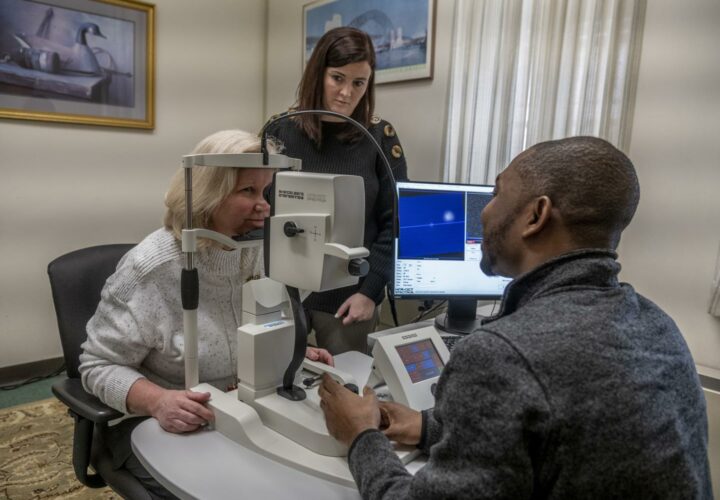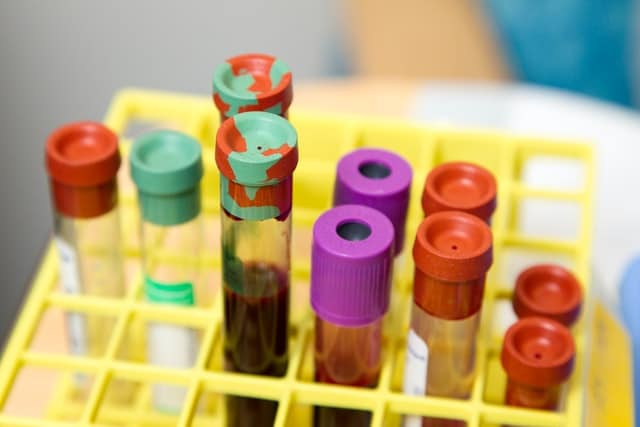Researchers in the Bio-Hermes study are developing more cost-effective Alzheimer's diagnostic technologies like blood and retinal tests in an effort to broaden access to accurate and timely diagnosis.
Scientists still don’t know why some people develop Alzheimer’s and others don’t. But while we may not fully understand the causes of Alzheimer’s, researchers are gaining ground in being able to help lower dementia risk and treat or postpone early symptoms. Experts suggest that early diagnosis and treatment can help mitigate the disease’s impact.
However, diagnosing Alzheimer’s comes with financial barriers. The positron-emission tomography brain scan, better known as a PET scan, can detect amyloid plaque — one of Alzheimer’s disease’s common hallmarks — in the brain, and so far, this is the most definitive way to diagnose the disease by indicating its presence, and get treatment options rolling. Scientists are searching for other, easier ways to accurately look for biomarkers of Alzheimer’s, and as part of that effort, Charter Research is hosting one of the testing sites for the Bio-Hermes study, part of the Global Alzheimer’s Platform Foundation (GAP).
In this trial, clinicians will use state-of-the-art technology to characterize different blood and cognitive biomarkers of Alzheimer’s, exploring whether these new options can provide the same predictive value as a PET scan. Importantly, the blood and cognitive biomarkers are less invasive and more cost-effective than PET scans, which are the only way to diagnose Alzheimer’s in a living person.
“The broader goal of the Bio-Hermes study is to help advance research to a point where faster and more cost-effective tests for Alzheimer’s are broadly available to the Alzheimer’s community,” John Dwyer, president of GAP said.
The study is unique as it will continue recruiting participants until a 20 percent threshold of minority populations is reached. Black and Hispanic people are historically underrepresented in clinical trials while having a higher risk of developing Alzheimer’s, and experts say making sure clinical trial participant groups accurately reflect the population that needs treatment will be a big step in unlocking the disease’s mysteries.
The Bio-Hermes trial requires only three visits to the research center — these visits allow participants to get to know the staff and doctors at the Charter center. The first day that they come into the center, they receive state-of-the-art cognitive tests. “The tests are all done using phones or iPads, making them simple to administer,” Kate Scheurich, psychometric rater with Charter Research said.
The CogniVue test is an FDA-approved platform for measuring cognitive function. “On the iPad, the participant moves their fingers around a circle to complete different tasks. One test for example, measures visual capacity, requiring the participant to follow moving dots around the circle,” she added.
Next, there are more iPad and mobile phone tests run through the Linus Health platform, as Scheurich explained: “Linus is a very advanced platform that measures eye movement, reaction time, and word recall.” Several other tests are included to measure other cognitive and psychological biomarkers.
On the next visit, a participant undergoes the state-of-the-art Retispec, a machine that scans the retina. “It measures several retinal biomarkers, including the structure of the small blood vessels as well as the presence of plaques,” Scheurich said. Afterward, the participants provide a blood sample that’s used to measure biomarkers including beta-amyloid and tau. The trial isn’t done yet, Scheurich said, “The PET brain scan in the last visit, is the most enticing part of our study for the participants.”
According to Scheurich, one of the challenges of Alzheimer’s drug trials is accurately selecting participants with the disease.
“Many types of diseases have similar symptoms to Alzheimer’s, including frontotemporal dementia and dementia with Lewy bodies,” she said. “With all of these different types of biomarkers, we get a close-up view at an individual’s risk. It also informs the treatments that they may receive, and allows us to recommend future trials.”
According to the Charter team, participants grow increasingly more comfortable with the center and its staff over the course of the three visits. “Everyone who goes through the trial also receives detailed information about their risks from one of our senior doctors,” Scheurich explained. “It also helps pre-screen people before they participate in future trials.”



